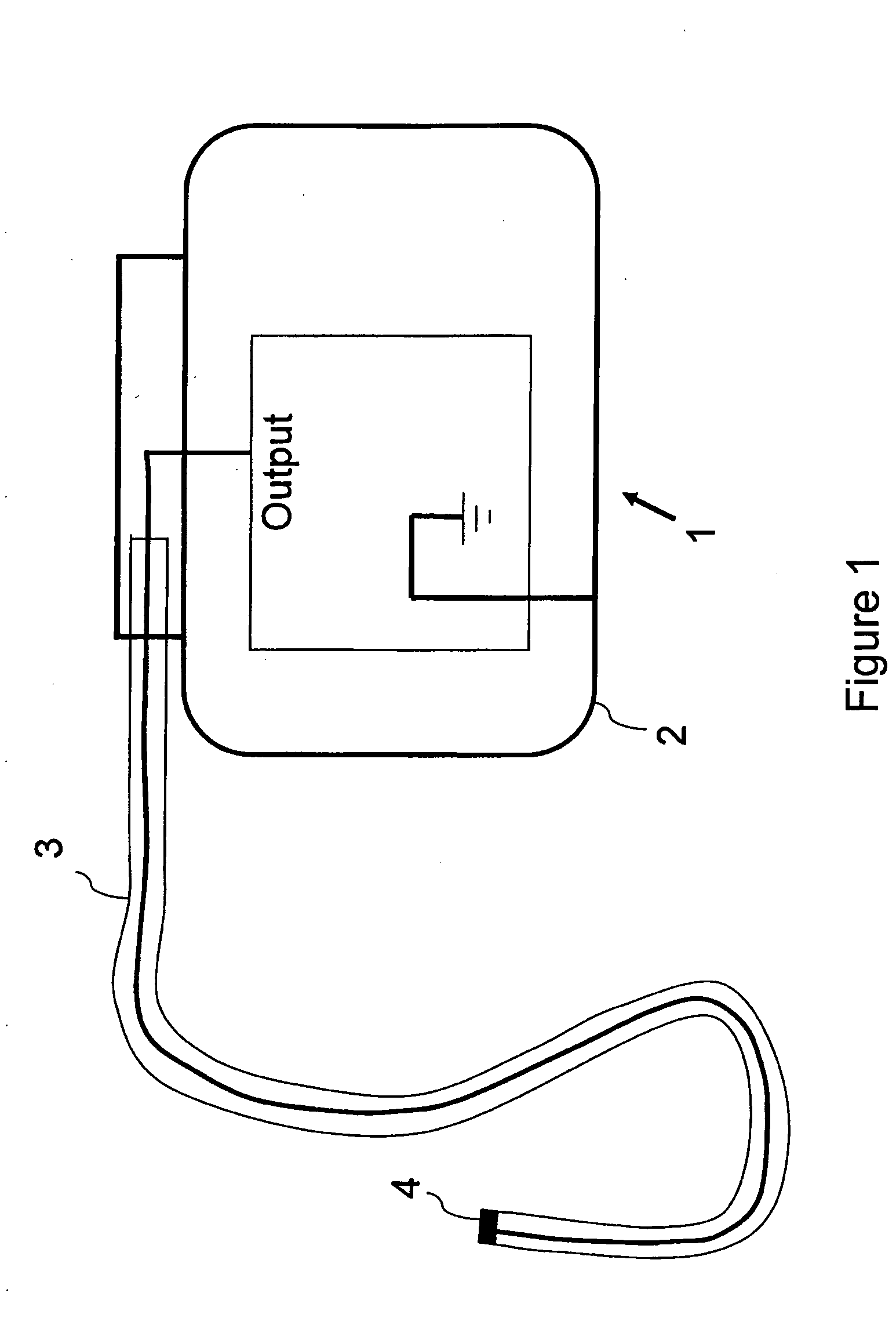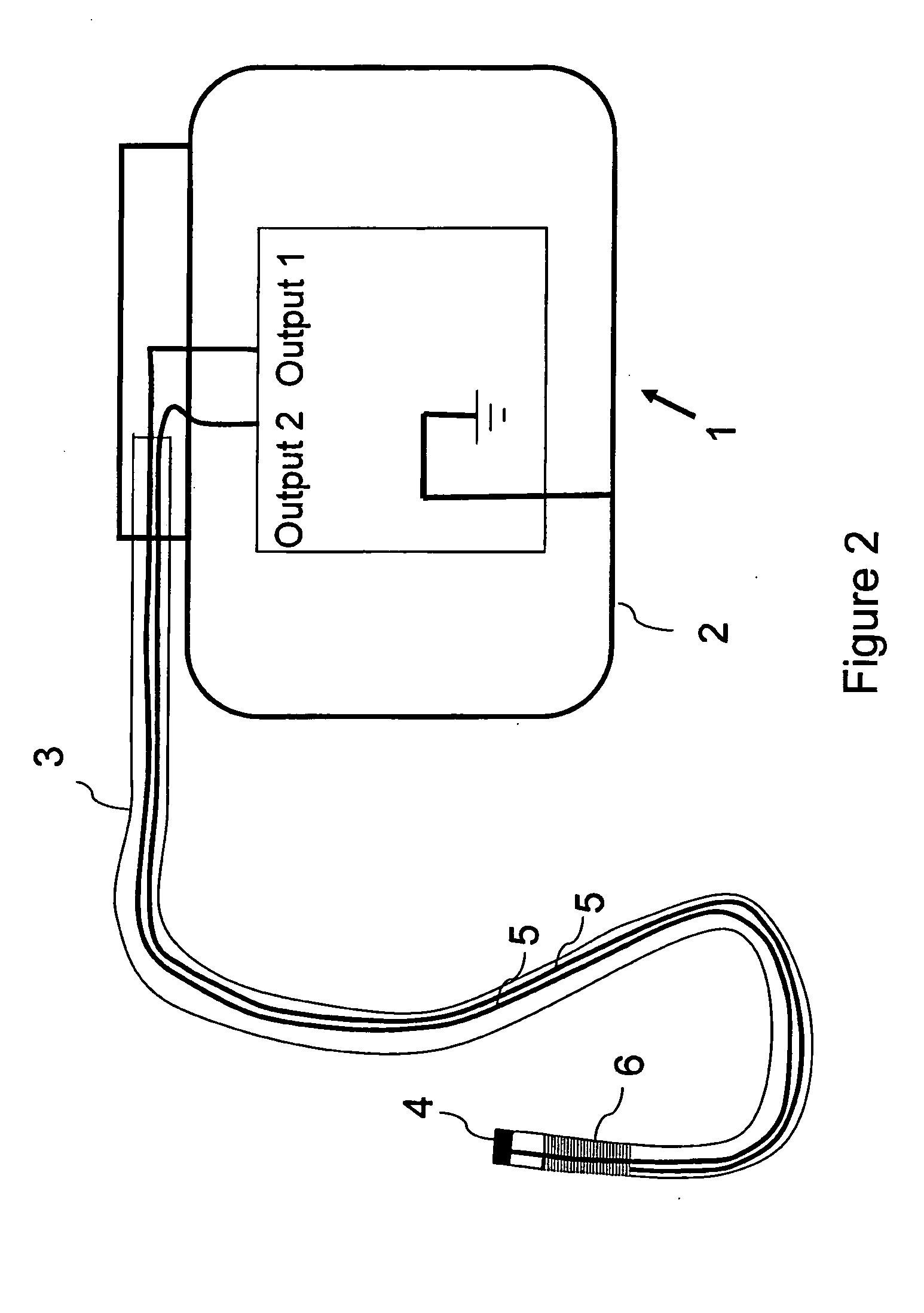MRI compatible implantable devices
a technology of implantable devices and compatible implants, which is applied in the direction of internal electrodes, transvascular endocardial electrodes, therapy, etc., can solve the problems of mri posing a threat to patients with implantable devices, patients with metallic implants not being allowed to undergo mri scans, and heating under certain mri scanning conditions
- Summary
- Abstract
- Description
- Claims
- Application Information
AI Technical Summary
Benefits of technology
Problems solved by technology
Method used
Image
Examples
example 1
Simulations
I. Pacing Pulse Models
[0125]Basic properties of simulations need to be defined before simulation results are provided. In standard stimulator applications, pulse duration changes with an interval of 0.1 ms to 2 ms. In this implementation, pulse duration is applied as 1 msec with a period of 1 sec. Target body part resistance is accepted as 1 KQ. Pulse level is applied as 5 volts.
[0126]a. Diode Resistor Circuit (DRC)
[0127]In order to simulate this implementation, ORCAD PSpice 9.1 Demo (Cadence, 2655 Seely Avenue, San Jose, Calif. 95134, USA) was used. In this simulation, Infineon Technologies BA595 pin diode model was used. A 1 msec pulse was applied in a period of 1 sec on the diode and resistor. As a result of this simulation, a 4.2 volt pulse level was observed on the tip (target body resistance) at 1 msec.
[0128]This result is shown in FIG. 19, which is a simulation result of a DRC embodiment on target body resistance. This result is a unipolar pacing result and one dio...
example 2
[0145]With the purpose of testing the CSC circuit, a circuit was designed that resembles an implantable pace generator (IPG). The simple pulse circuit contained a standard 9 Volt battery and a 16F84A 18-pin Enhanced FLASH / EEPROM 8-Bit microcontroller. The 16F84A microcontroller was programmed to generate a 1 msec pulse with a period of 1 sec. A 9 Volt battery and a 16f84A microcontroller were put on the same board and connected to each other. This board was put into a waterproof plastic box having dimensions of 9.5×5×2.5 (cm). Approximately 29 cm copper wires (0.5 mm diameter) were connected to this box for signaling and grounding. The waterproof plastic box was covered by copper tape and this conductive coating was connected to a ground wire.
[0146]In this circuit, a standard resistor value of 27 KΩ was used. A 500 KΩ resistor was connected to a gate of a PMOS transistor in order to have reliable gate control in the experiment. A 10 μF tantalum capacitor and a...
PUM
 Login to View More
Login to View More Abstract
Description
Claims
Application Information
 Login to View More
Login to View More - R&D
- Intellectual Property
- Life Sciences
- Materials
- Tech Scout
- Unparalleled Data Quality
- Higher Quality Content
- 60% Fewer Hallucinations
Browse by: Latest US Patents, China's latest patents, Technical Efficacy Thesaurus, Application Domain, Technology Topic, Popular Technical Reports.
© 2025 PatSnap. All rights reserved.Legal|Privacy policy|Modern Slavery Act Transparency Statement|Sitemap|About US| Contact US: help@patsnap.com



